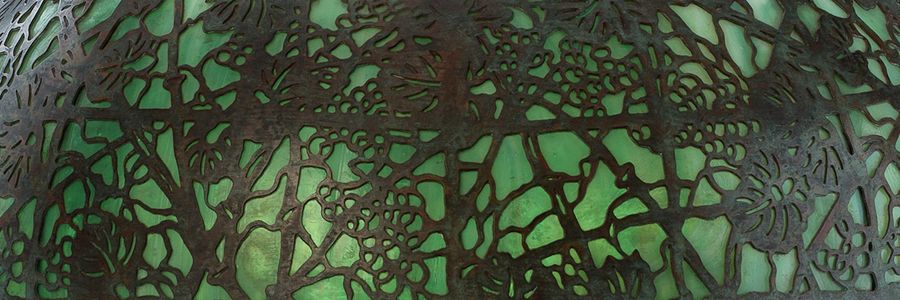THE IRIDESCENCE OF TIFFANY
Louis Comfort Tiffany (1848-1933) is renowned as the greatest American glassmaker and jeweler. He was the heir of Charles Tiffany, the founder of Tiffany and Co, the prestigious New York silversmithing and jewelry house.
After undergoing various artistic trainings in the United States and Europe, Louis Comfort Tiffany founded his own glass company and invented the "Favrile glass" technique in 1893. This process allowed him to simulate the iridescent effect of ancient glass by adding metallic salts to molten glass, giving it a glossy and shimmering appearance. It became his trademark and opened the doors to Salons and World Expositions for him.
Louis Comfort Tiffany also produced numerous stained glass windows, and with the remnants of glass left from his monumental creations, he came up with the idea of producing lampshades. This secondary production quickly became a complete range of interior decoration objects. In 1906, the Tiffany Studios catalog offered over 300 models of light fixtures. The various examples of lamp bases, floor lamps, or hanging lamps in bronze could be mixed and matched at will with the shades from the catalog, creating an extraordinary combination of possibilities for the clientele. He drew his inspiration from nature for his themes and decorative motifs: leaves, flowers, fruits, and even insects were at the heart of his creations' designs.
Europeans could acquire his works at the "L'Art Nouveau" gallery of Siegfried Bing in Paris, which was the exclusive representative of the American firm in Europe.

TIFFANY STUDIOS Lamp, circa 1900 Stamp "Tiffany
Studios New York 10648" on the reverse of the base
Height: 59 cm - Diameter: 40.5 cm
Provenance: Private collection, Paris
Estimate: €6,000 - €8,000
Contact
Jessica Rémy-Catanese
+33 (0)1 47 45 08 22
remy@aguttes.com



